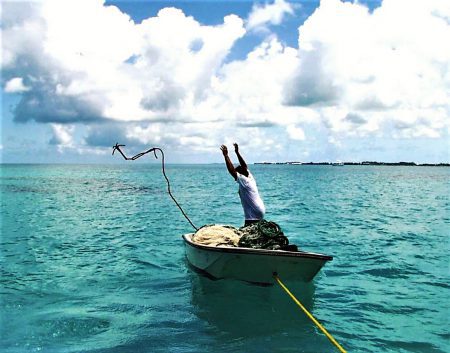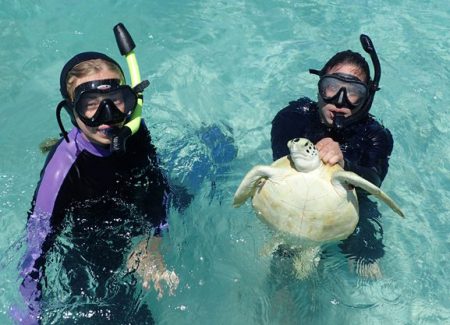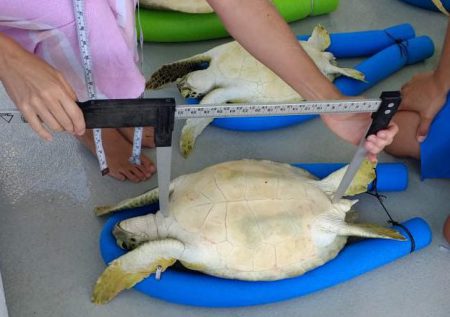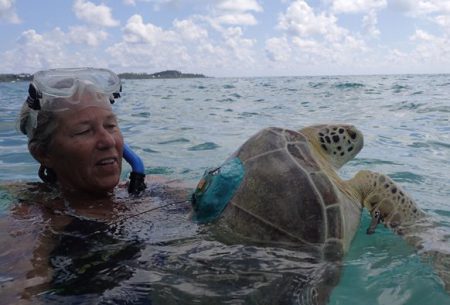Most scientific studies of sea turtles are conducted on nesting beaches where females come ashore to lay their eggs. However, the Bermuda Turtle Project is an in-water project in which turtles are captured in their marine environment in order to learn more about their complex life histories. (The methods used during sampling are specified in the Bermuda Turtle Project Procedures Manual – PDF)

Our research sampling sessions take us to prime green turtle feeding grounds, sea grass beds that lie nestled between the ledge flat reefs on the northern side of the Bermuda. A total of about 20 days of sampling are committed to the Bermuda Turtle Project each year.

Once the study site of the day is reached, the large research vessel is anchored on the outer edge of the reef. The smaller catch boat, towing a net boat and entrapment net, is loaded with team members.
The catch boat moves inside the reef. Sea turtles have an acute sense of hearing and are easily chased off by engine noise and other unusual sounds, so the approach to the site is made as quietly as possible.
The entrapment net is 610 meters (2,000 feet) long, 6.1 meters (20 feet) deep, and designed to entangle sea turtles. It is deployed in a large circle that encompasses approximately 3 hectares.
The project provides students and volunteers with the opportunity to participate in a research project, learn about sea turtle biology, and enjoy the beautiful marine environments of Bermuda.

The role of the snorkelers is to patrol the circumference of the net, remove tangled turtles, and bring them to the surface as quickly as possible.
The catch boat is on hand within the net to retrieve the captured turtles.
Data on water temperature, depth and habitat are recorded at each site and the exact coordinates are recorded with a Global Positioning System (GPS).
Each of the turtles is triple-tagged with a combination of external plastic and metal tags, plus an internal PIT tag. Each tag has a unique serial number. External tags have an address and a reward message. About one-quarter of the turtles captured have been previously tagged by us and frequently, the old tags must be changed to a larger size.

Each turtle is carefully weighed and measured. Growth rates from recaptured tagged turtles help refine estimates of age at sexual maturity and help to determine the length of residency in Bermuda. Information on age at sexual maturity is critical for population models.
Blood samples taken from each turtle are used to determine the sex of the individual turtle and the genetic identity. Determination of sex ratios is important for understanding population structure.

Satellite transmitters attached to selected animals help us to understand more about sea turtle behavior on the Bermuda Platform. The satellite tags also allow us to document migratory routes taken by sea turtles when they leave the island for the next phase of their life’s journey.
At the end of a day’s sampling, it is always a favorite task of our volunteers to release each turtle back onto the site.
Since 1968, the use of the entrapment netting method has resulted in over 3,100 captures